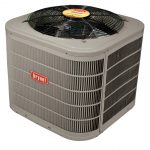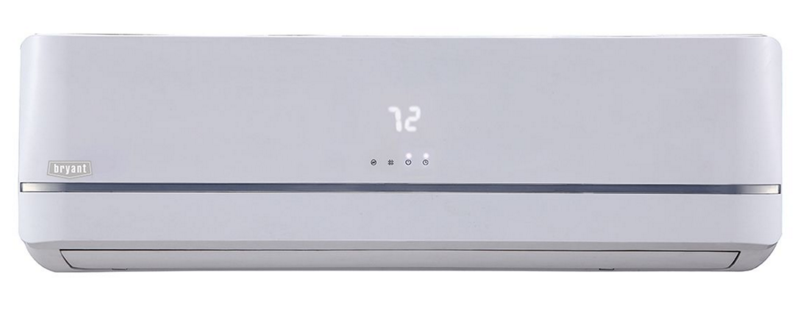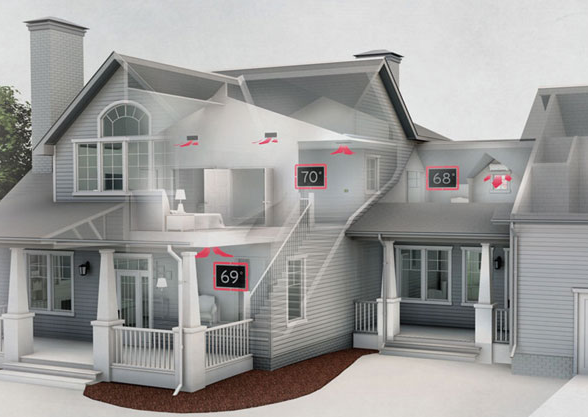Ductless Systems vs. Central Air Systems
For homeowners, the decision between choosing a ductless mini-split system and a conventional central air conditioning system can be a difficult one.
Let us compare the major differences between the two options.
Central Air 
Let’s first talk about the traditional central air conditioning system. This type of air conditioning is pretty common and preferred by many residents who want to keep entire homes cool with a single thermostat. It treats air at a central location and distributes it to and from rooms by one or more fans and a series of ducts. Central air conditioners take the hot air in the home and pull it into a central return air duct, which is the larger register in your home found in the hallway or other central area. Hot air is then filtered and drawn over the indoor coil where the heat is soaked up by the refrigerant and exchanged outside via the condenser. The cold air is now recirculated back into your entire home by way of the ducting system.
Let’s look at the Advantages and Disadvantages of Central Air Conditioning systems
Advantages:
- Convenient to use, only on centrally located thermastat
- Energy efficient?
- Can share ductwork with heating system
- The indoor part of central air conditioning systems tends to be hidden from sight, with only the air registers seen on the walls
- Sometimes you only need to replace part of your central system, this would keep costs down and improve your existing system.
- Since larger higher efficient filters will fit on a central system, filtration tends to work far better than with the smaller filters on a ductless unit.
- Some homeowners also prefer this system due to aesthetic reasons.
Disadvantages:
- Requires ductwork
- Can be noisy
- Cost to install is high
- Central air relies on ducting to distribute air to each room which can be torn, damaged or just fall apart resulting in major leakage, loss of efficiency and capacity.
- Central a/c systems can be zoned for different rooms, but this requires extra, sometimes third-party equipment and adds an additional cost to the job.
- With Central Air you must cool an entire home when only one room may need cooling.
- 18,000 BTU is a typical minimum central air unit.
- Retrofitting homes requires cutting holes in walls, floors, ceilings or decreasing closet space with ducts. .
- unlike an air conditioning unit that goes on and off throughout the day.
Ductless Systems 
Mini split air conditioners (ductless systems) are a cost effective choice to center air conditioning. A ductless heat pump offers extremely efficient operation, quiet operation, provides both heating and cooling and is very simple to install. Also, many local and regional rebates are available making it a superb choice for many home owners. Ductless air conditioning uses an air-handling unit that is located inside, mounted on a wall or inset into the ceiling. It keeps your room temperature at a constant temperature. Unlike window units, ductless air conditioning units have programmable temperature settings (not just low, medium, and high). Unlike traditional central systems ductless systems can vary their output and energy usage based on the current conditions inside and outside the home. This ability to ramp up and down to just what is needed is what sets these systems apart.
Advantages:
- Small size and flexibility
- Easy to install
- Requires no ductwork
On the other hand, ductless mini splits cool only the areas you want and not the areas you don’t.
With inverter driven ductless mini splits, you can use as minimal as 3,000 BTUs.
Ductless mini splits require just a 3 or 4” diameter hole in the outside wall. Means less mess and better home aesthetics.
Ductless systems are more targeted and can cool just one spot or multiple zones in the same house. Generally up to four, sometimes eight, air-handling units can all connect to the same outdoor compressor.
The Environmental Protection Agency reports that the average household saves up to $1,000 every year on cooling costs by using ductless air conditioning units.
Since there are no duct systems to install, labor cost is reduced when compared to central air conditioning installation.
Other people praise the environmental benefits of the focused energy use as opposed to wasted air through central systems.
the outdoor unit runs virtually silent. This feature is especially ideal when units are placed near bedroom windows, neighbors or in the backyard.
Disadvantages:
- Cost of system is high
- Sizing of the system can be tricky
- it may be difficult to find qualified installers. (Lucky for you, we are qualified installers. Our technicians have been through training classes and we are dedicated to keeping up the latest training)
- With this type of air conditioning there is not one central place to adjust temperature for an entire house. For those who choose ductless systems, this is a small price to pay.
- Some people also view the aesthetic appearance of ductless units as a disadvantage as they are not hidden in the walls like duct systems. There are smart ways to integrate these systems though that make them less obvious in the rooms where they exist.
The best way to decide which to use is to know what is important to you and your family, what your budget is, and find out what your homes requirements are. Whatever system you choose, remember that a proper installation of any air conditioning system is what will contribute to the most comfort, energy efficiency, and safety your system can provide. Consult an air conditioning specialist for even more advice on what may be best for your space.


Leave a Reply